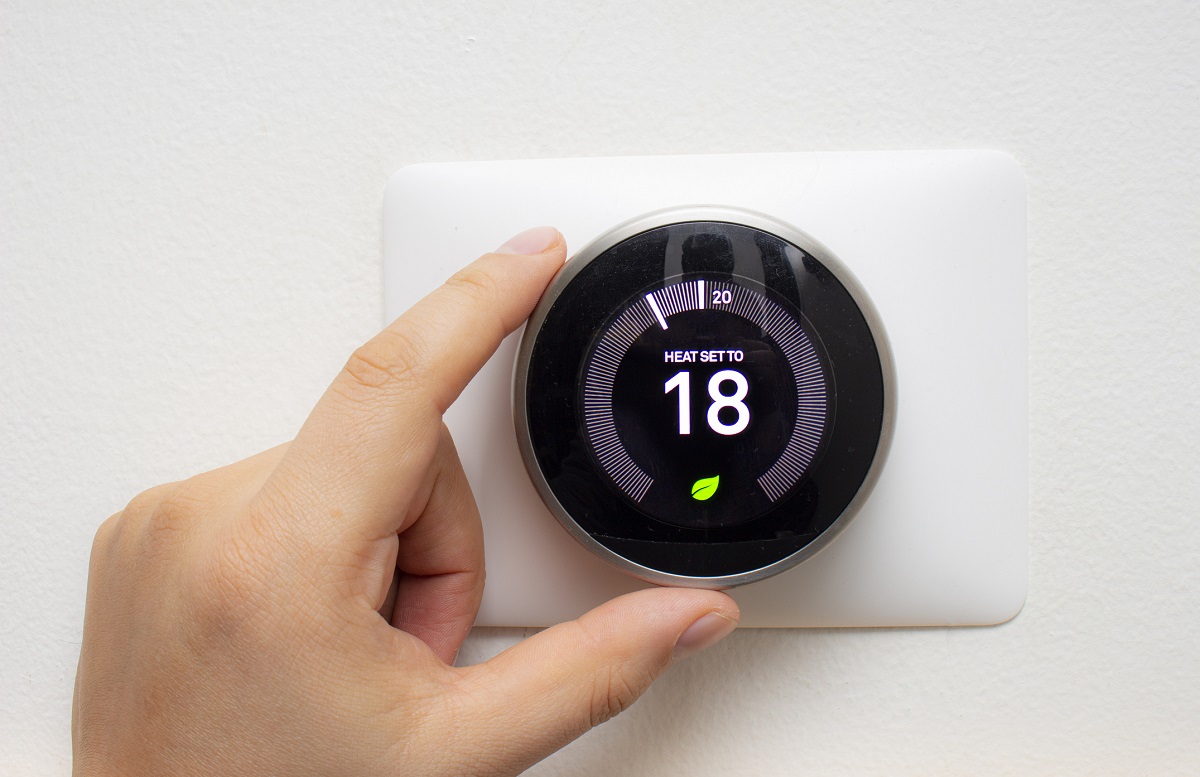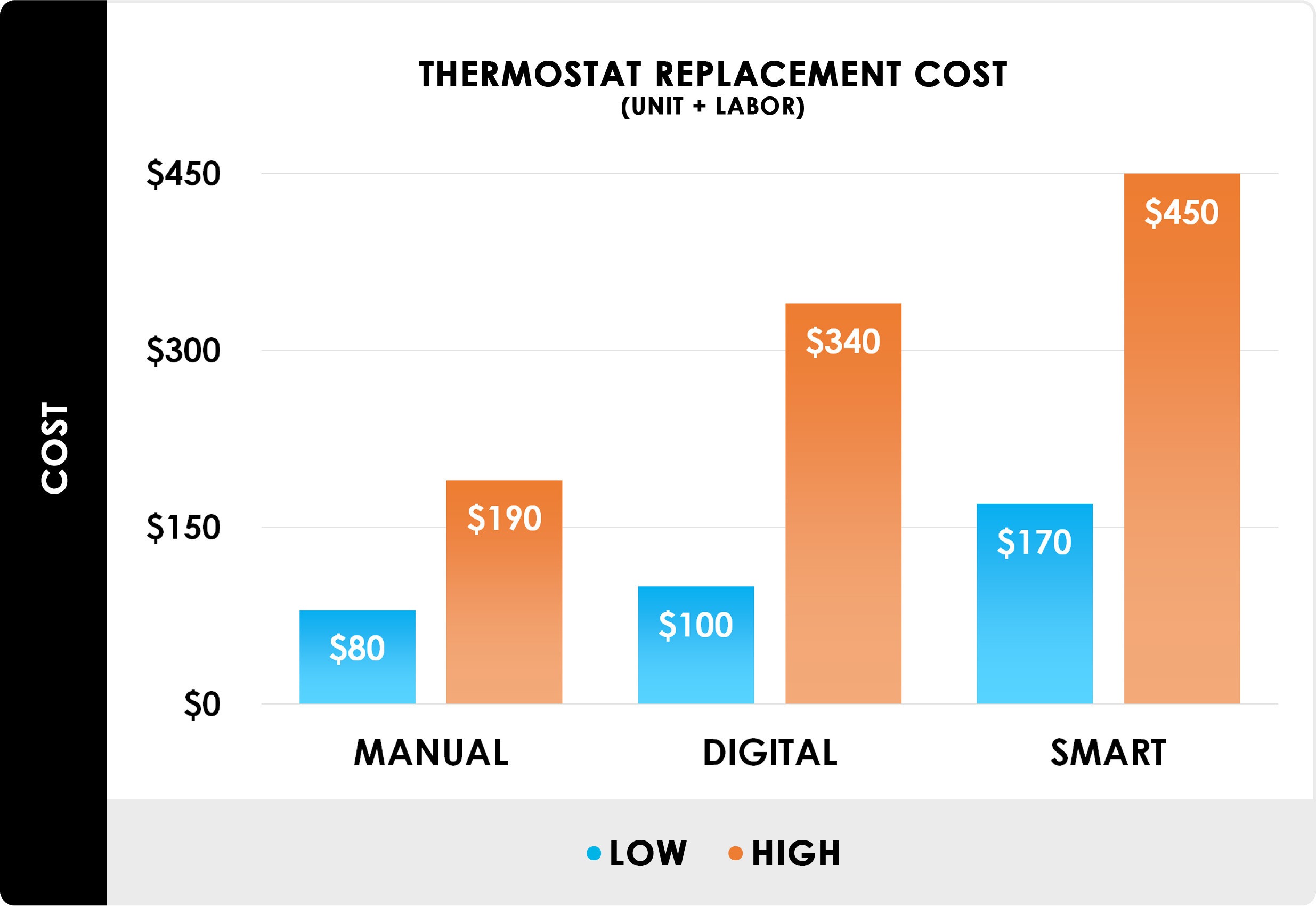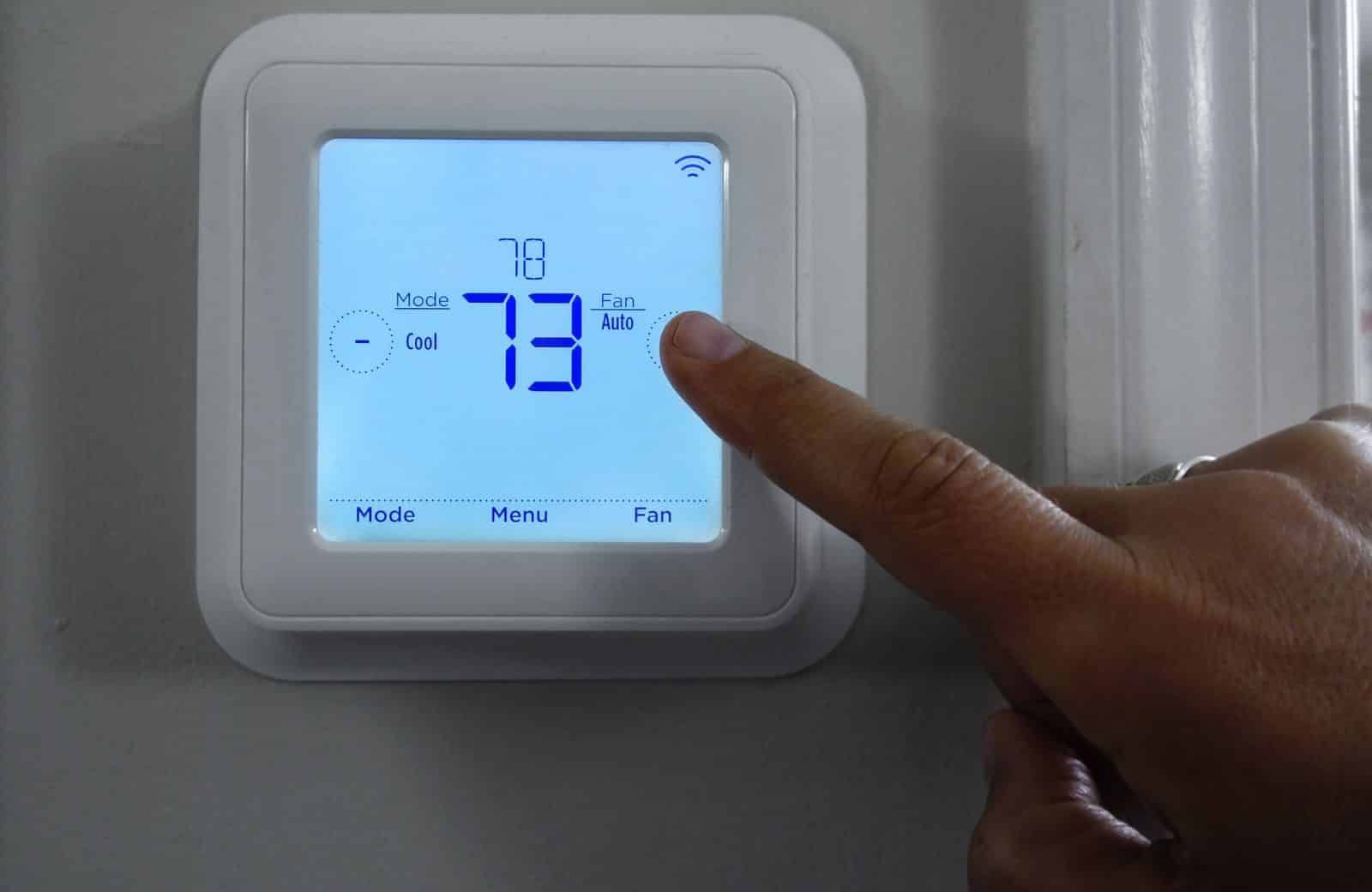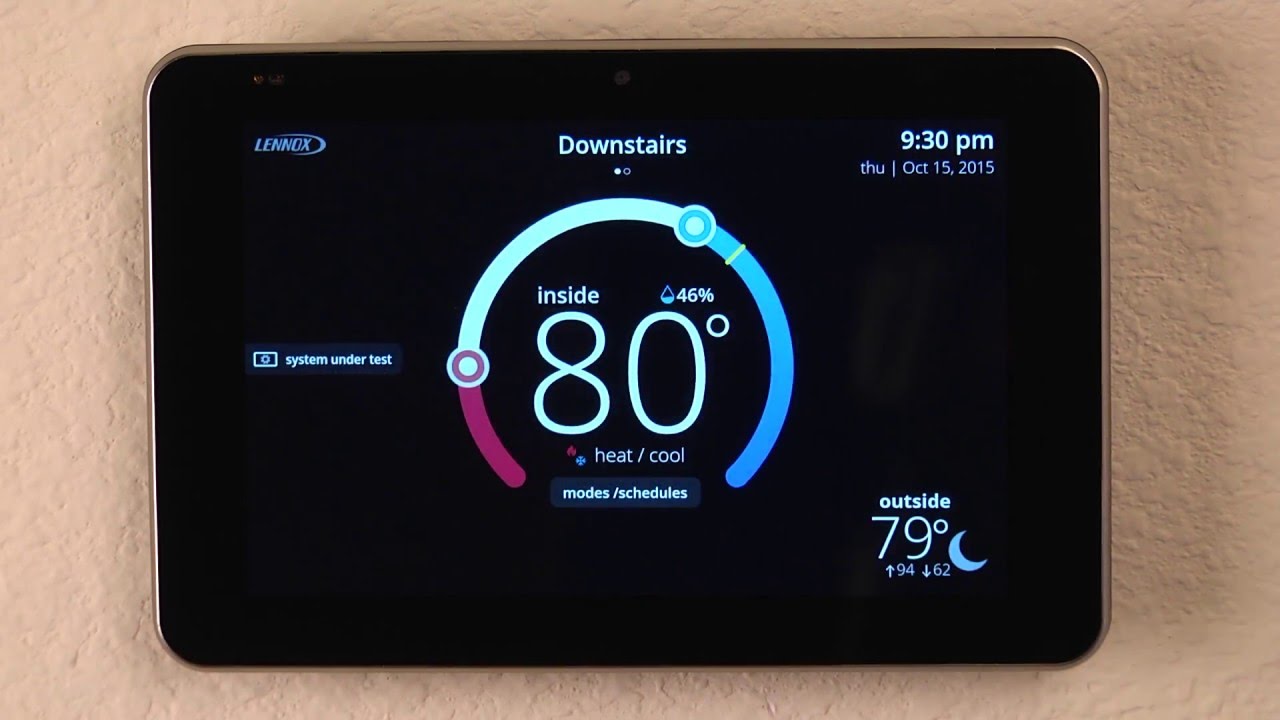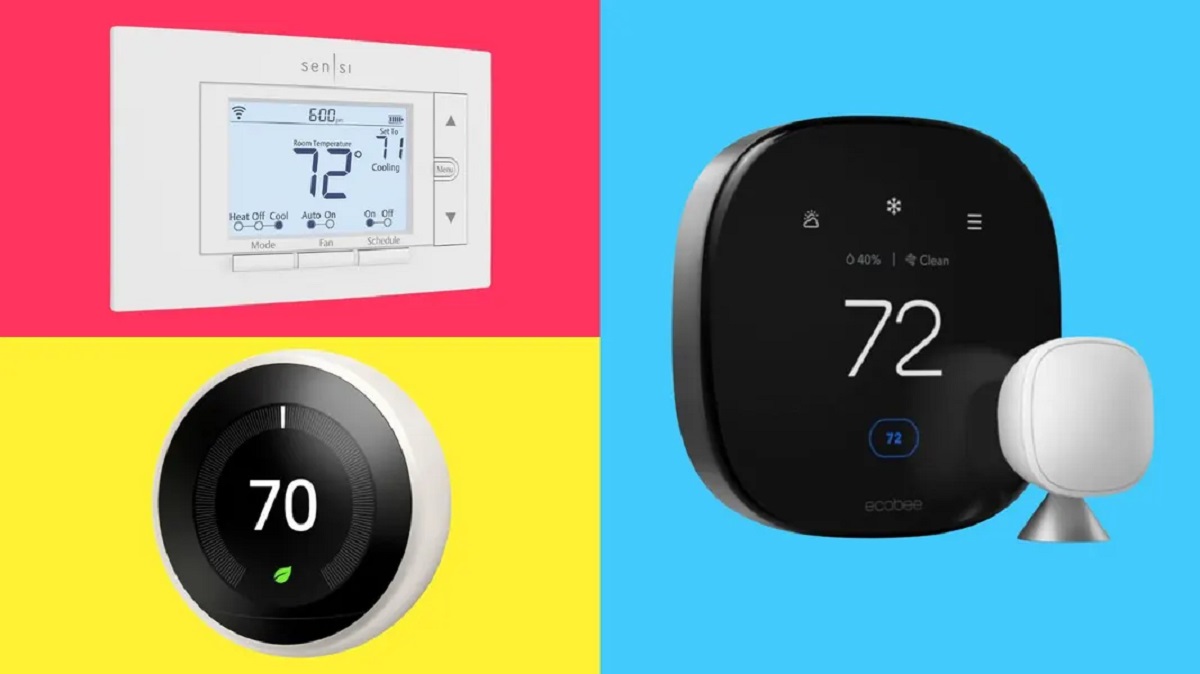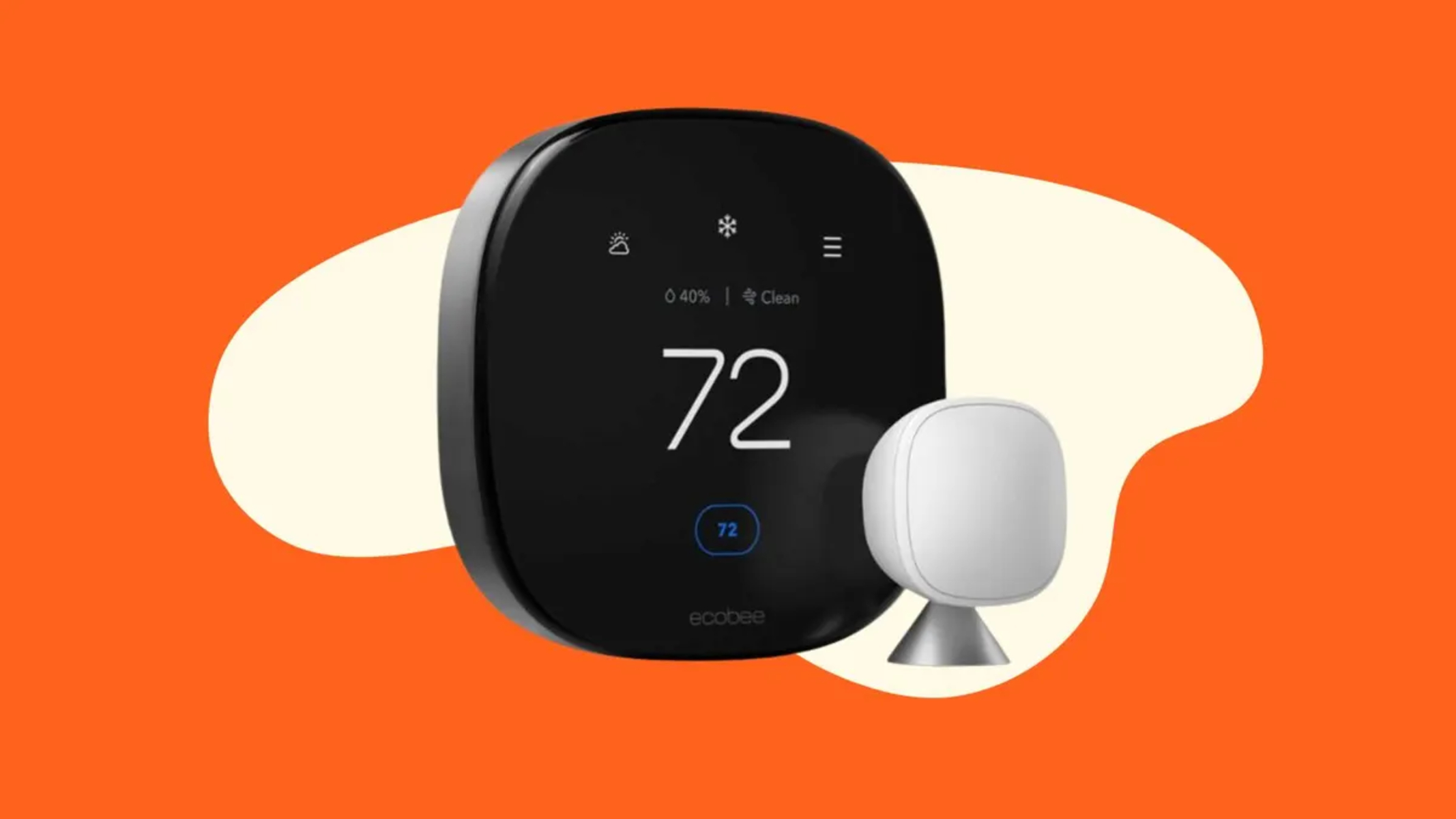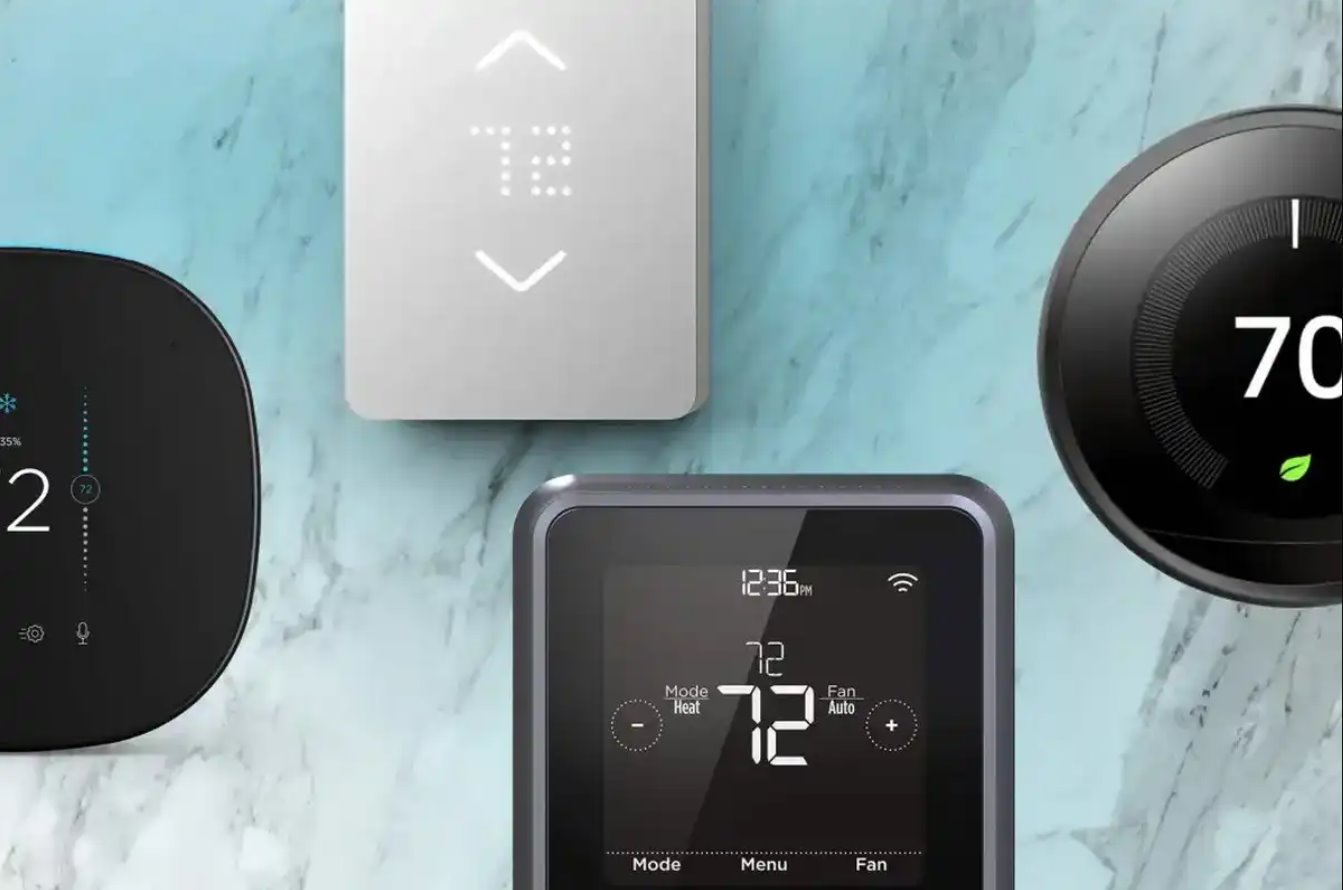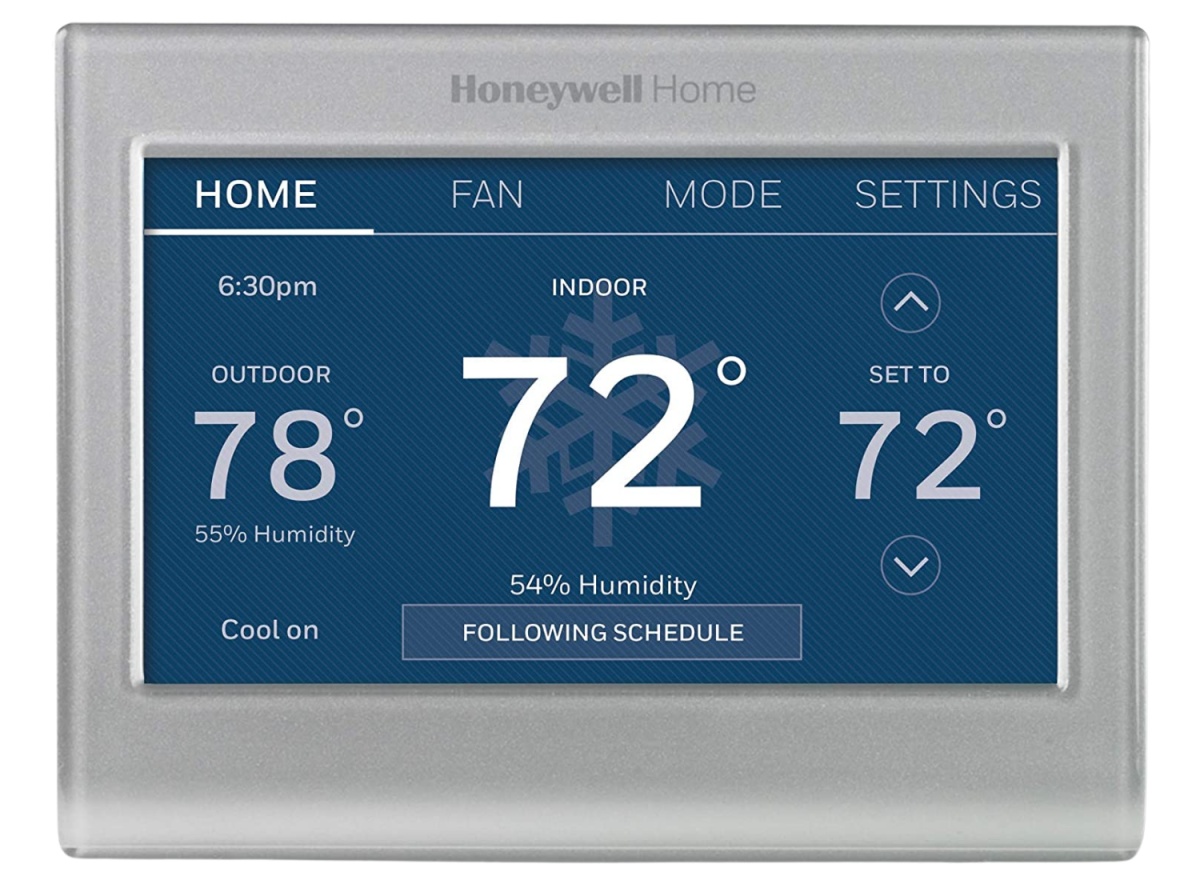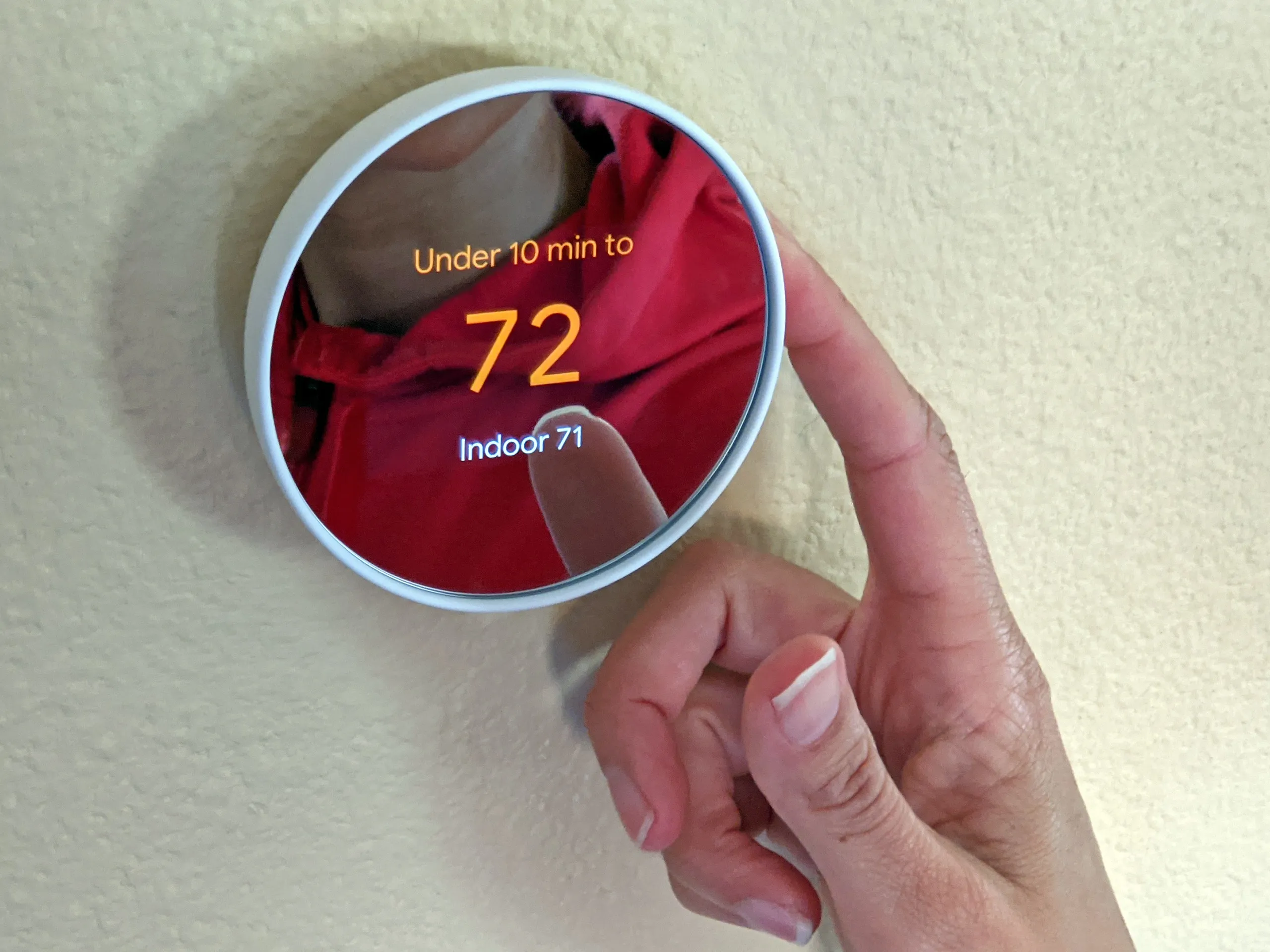Introduction
The advancement of technology has made our lives more convenient and efficient in various ways. One notable innovation that has gained popularity in recent years is the smart thermostat. As we strive to find sustainable solutions for our homes, a smart thermostat offers a range of benefits compared to a traditional programmable thermostat. With its ability to automate temperature control and provide real-time data insights, a smart thermostat takes comfort and energy efficiency to a whole new level.
Unlike the traditional programmable thermostat, which allows you to set a fixed schedule for temperature changes, a smart thermostat offers a more flexible and intelligent approach. It employs cutting-edge technology to adapt to your lifestyle and preferences, resulting in accurate temperature control and energy savings.
In this article, we will explore the reasons why a smart thermostat is superior to a programmable thermostat. We will delve into the ease of use, potential energy savings, remote access and control, learning capability, integration with other smart devices, and real-time data and insights provided by a smart thermostat. By understanding these advantages, you will be empowered to make an informed decision when it comes to upgrading your home’s thermostat.
Ease of Use
One of the key advantages of a smart thermostat over a programmable thermostat is its unparalleled ease of use. Traditional programmable thermostats can be complex to set up and navigate, requiring users to manually input temperature settings for different times of the day. This can lead to confusion and frustration, especially for those who are not tech-savvy.
On the other hand, smart thermostats are designed with user-friendly interfaces and intuitive controls. Many models feature touchscreen displays and simple menus, making it easy to adjust temperature settings with just a few taps. Additionally, smart thermostats often come with mobile apps that allow you to control your thermostat from anywhere, giving you unparalleled convenience and control over your home’s temperature.
Furthermore, smart thermostats often incorporate advanced features like geofencing, which uses your smartphone’s GPS to detect when you’re away from home and automatically adjusts the temperature to save energy. This eliminates the need to remember to manually change the settings when you leave or return home.
Overall, the ease of use offered by a smart thermostat makes it a hassle-free option for homeowners. With a user-friendly interface and convenient mobile control, adjusting and managing your home’s temperature has never been easier.
Energy Savings
One of the primary reasons why a smart thermostat is superior to a programmable thermostat is its ability to deliver significant energy savings. A smart thermostat utilizes advanced algorithms and machine learning capabilities to optimize your home’s heating and cooling patterns, resulting in reduced energy consumption and lower utility bills.
Unlike programmable thermostats, which only allow you to set fixed temperature schedules, smart thermostats continuously analyze your usage patterns and adjust the temperature settings accordingly. For example, if you regularly leave your home at a certain time each day, a smart thermostat will learn this pattern and automatically lower the temperature to save energy during those hours. It will then start warming up your home just in time for your return.
Furthermore, smart thermostats often have occupancy sensors that can detect when you’re not at home. This allows them to automatically adjust the temperature to an energy-saving mode, ensuring that you’re not wasting energy in an empty house. When you’re home, the thermostat will adapt to your preferred comfort settings, creating a personalized and energy-efficient environment.
Moreover, some smart thermostats provide energy usage reports and insights, allowing you to monitor your energy consumption in real-time. This information empowers you to make informed decisions about your energy usage and find ways to further optimize your home’s energy efficiency.
By utilizing advanced algorithms and learning capabilities, a smart thermostat can significantly reduce your energy consumption and carbon footprint, all while maintaining a comfortable living environment. The energy savings alone make the upgrade from a programmable thermostat to a smart thermostat a worthwhile investment.
Remote Access and Control
One of the standout features of a smart thermostat is its ability to provide remote access and control. With a programmable thermostat, you are limited to adjusting the temperature settings directly on the device itself. However, a smart thermostat takes convenience to the next level by enabling you to control your home’s temperature from anywhere using your smartphone, tablet, or computer.
Through dedicated mobile apps or web interfaces, smart thermostats allow you to monitor and adjust your home’s temperature remotely. Whether you’re at work, on vacation, or simply relaxing on the couch, you can easily access your smart thermostat and make temperature changes as needed.
This remote access and control offer numerous benefits. For instance, if you’re coming home earlier than expected, you can use the app to ensure that your home is already at a comfortable temperature when you arrive. Conversely, if you’re away for an extended period, you can adjust the thermostat to an energy-saving mode to save on energy costs.
In addition to temperature control, many smart thermostats also provide advanced features such as humidity control and air quality monitoring. You can monitor and adjust these settings remotely as well, ensuring that your home’s environment is always optimized for comfort and well-being.
Furthermore, remote access and control allow you to receive notifications and alerts from your smart thermostat. This can include reminders to change air filters, alerts about potential malfunctions, and even energy usage updates. With this information at your fingertips, you can proactively manage your HVAC system and address any issues promptly.
Overall, the remote access and control capabilities of a smart thermostat provide unparalleled convenience and flexibility. By being able to manage your home’s temperature and settings from anywhere, you can ensure comfort and energy efficiency at all times.
Learning Capability
One of the standout features of a smart thermostat is its learning capability. Unlike a programmable thermostat, which relies on pre-set schedules, a smart thermostat can adapt to your lifestyle and preferences by learning your behavior patterns and adjusting accordingly.
Smart thermostats use advanced algorithms and machine learning to analyze your usage patterns, such as when you wake up, leave the house, and return home. They then utilize this data to create a customized heating and cooling schedule that maximizes comfort while minimizing energy consumption.
For example, if you tend to wake up at 7 am every weekday, a smart thermostat will learn this pattern and start adjusting the temperature in your home a few minutes before, so it’s at your desired comfort level when you wake up. Similarly, if you have a regular work schedule, your smart thermostat can learn when you typically leave the house and adjust the temperature to save energy while you’re away.
What makes the learning capability of a smart thermostat truly remarkable is its ability to adapt to changes in your routine. If your schedule shifts or you go on vacation, the thermostat will learn these changes and adjust accordingly. This ensures that your home is always comfortable and energy-efficient, without the need for manual intervention.
In addition to learning your behavior patterns, smart thermostats can also consider external factors such as weather conditions. By accessing weather data, they can make adjustments to the temperature settings based on anticipated changes in temperature or humidity levels. This proactive approach ensures that your home remains comfortable, regardless of the weather outside.
In summary, the learning capability of a smart thermostat allows it to create a customized heating and cooling schedule based on your behavior patterns. By adapting to changes in routine and considering external factors, a smart thermostat can provide optimal comfort and energy efficiency without any manual tweaking required.
Integration with Other Smart Devices
Another compelling advantage of a smart thermostat is its seamless integration with other smart devices in your home. This integration creates a connected ecosystem that offers enhanced convenience, automation, and control over your home’s environment.
Smart thermostats can be integrated with various smart devices, such as smart speakers, home assistants, and smart lighting systems. This allows you to control your thermostat using voice commands, giving you hands-free control and an effortless way to adjust the temperature. For example, you can simply say, “Hey Google, set the temperature to 72 degrees,” and your smart thermostat will respond accordingly.
Furthermore, integration with other smart devices opens up opportunities for automation and synchronization. For instance, you can create “scenes” or “routines” that trigger specific actions across multiple devices. For example, you can set up a routine that automatically adjusts the temperature, turns off the lights, and locks the doors when you leave the house.
Integration with smart devices also allows for a more holistic approach to managing your home’s energy consumption. By connecting your smart thermostat to energy monitoring devices or smart meters, you can track your overall energy usage and identify areas for improvement. This comprehensive view of energy consumption enables you to make informed decisions about your energy usage and further optimize your home’s efficiency.
Additionally, many smart thermostats are compatible with smart home platforms like Amazon Alexa, Google Assistant, and Apple HomeKit. This compatibility allows you to control your thermostat alongside other smart devices using a single app or voice command. The ability to control multiple aspects of your home’s environment through a centralized interface enhances convenience and simplifies the management of your connected devices.
Combining the power of a smart thermostat with other smart devices in your home creates a cohesive and intelligent system. The integration and interoperability of these devices enable seamless automation, control, and energy management, making your home smarter and more efficient.
Real-Time Data and Insights
One of the significant advantages of a smart thermostat is the access to real-time data and insights about your home’s heating and cooling patterns. Unlike traditional programmable thermostats, which provide basic temperature settings, smart thermostats offer detailed information that can help you optimize energy usage and improve comfort.
A smart thermostat continuously monitors and collects data on factors such as indoor and outdoor temperatures, humidity levels, and energy consumption. This data is then presented to you in user-friendly interfaces, often through mobile apps or web dashboards.
By analyzing real-time data, you can gain insights into your energy usage patterns and make informed decisions to optimize efficiency. For example, you can identify periods of high energy consumption and adjust your usage accordingly to reduce costs. You can also track the impact of changes in temperature settings or scheduling, allowing you to fine-tune your thermostat’s settings for maximum comfort while minimizing energy waste.
Additionally, some smart thermostats provide energy reports and suggestions for energy-saving improvements. These insights can help you better understand your energy consumption patterns and take proactive steps to reduce waste. For instance, the thermostat might recommend setting up a more efficient temperature schedule or adjusting your thermostat to a more energy-saving mode during certain times.
Furthermore, real-time data and insights can help with troubleshooting and maintenance. Smart thermostats can monitor the performance of your HVAC system and provide early warnings or alerts if there are issues or malfunctions. This allows you to address problems promptly, saving you from potential costly repairs and ensuring optimal performance of your heating and cooling system.
In summary, the real-time data and insights provided by a smart thermostat empower you to make data-driven decisions about your energy usage and comfort. By analyzing this information, you can optimize your thermostat’s settings, reduce energy waste, and maintain the efficiency of your HVAC system.
Conclusion
As we have explored in this article, a smart thermostat offers numerous advantages compared to a programmable thermostat. From its ease of use and energy-saving capabilities to remote access and control, learning capability, integration with other smart devices, and real-time data insights, a smart thermostat brings a new level of convenience, comfort, and efficiency to your home.
With user-friendly interfaces, intuitive controls, and mobile apps, smart thermostats make it effortless to adjust and manage your home’s temperature. They adapt to your behavior patterns, learning your schedule and optimizing temperature settings to maximize comfort while saving energy.
The remote access and control capabilities of smart thermostats allow you to adjust the temperature from anywhere, ensuring comfort and energy efficiency even when you’re not at home. Integration with other smart devices creates a connected ecosystem, allowing for seamless automation and control over your home’s environment.
Additionally, smart thermostats provide real-time data and insights, empowering you to make data-driven decisions to optimize energy usage and comfort. The ability to monitor and analyze energy consumption patterns allows you to identify areas for improvement and make adjustments accordingly.
Overall, a smart thermostat is a worthy upgrade from a programmable thermostat. Not only does it offer convenience, energy savings, and advanced features, but it also contributes to a more sustainable and comfortable living environment.
Consider investing in a smart thermostat to enhance your home’s comfort, save on energy costs, and contribute to a greener future.







